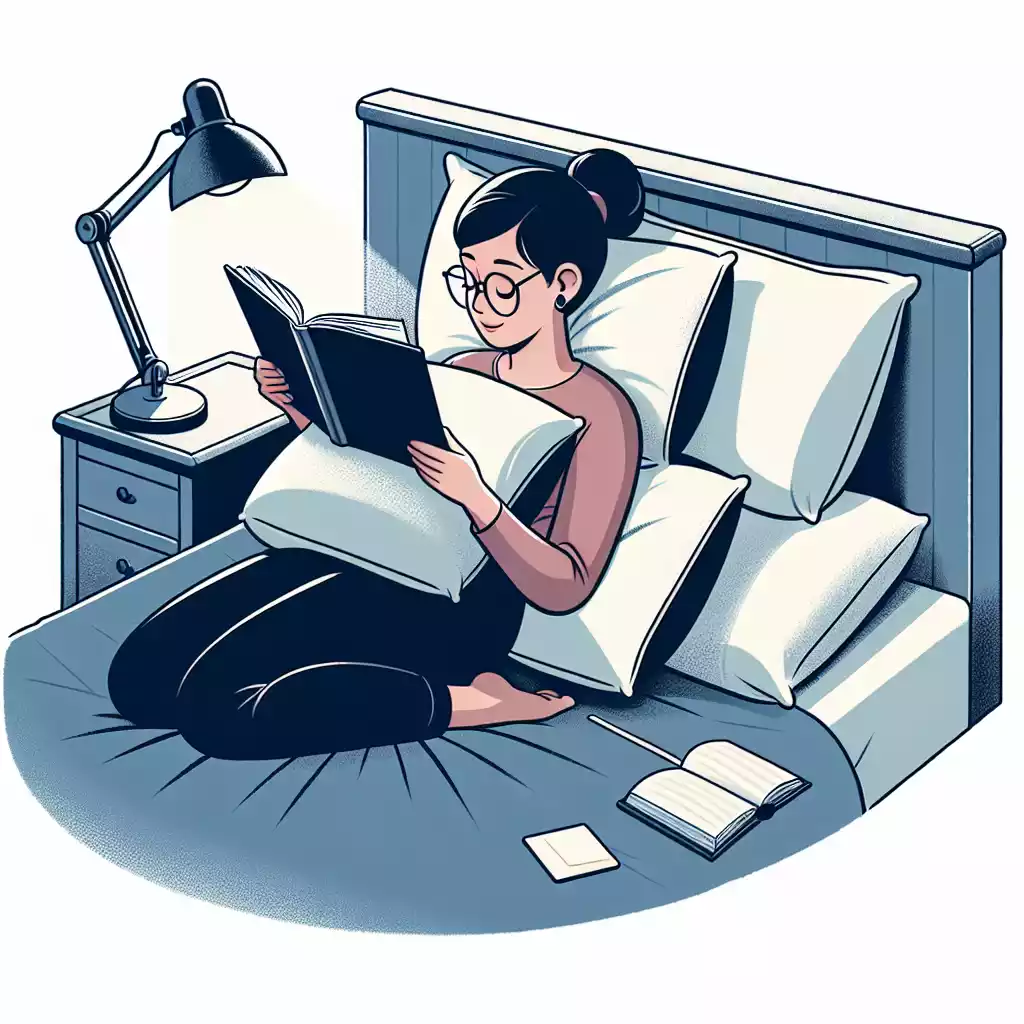Introduction to Reading in Bed
Reading in bed is a cherished pastime for many, offering a peaceful end to a busy day. However, without the right posture, this relaxing activity can lead to discomfort and even long-term health issues. Understanding the importance of maintaining a proper position while reading can transform your nightly routine into a more enjoyable and pain-free experience.
Historically, reading in bed has been a symbol of luxury and intellect. From ancient scholars who read scrolls by candlelight to modern readers flipping through digital pages, the practice has always been associated with relaxation and knowledge. Yet, with the evolution of reading materials and habits, the need for proper posture has become more critical than ever. Whether you’re diving into a novel or catching up on the latest news, ensuring you read in a comfortable and supportive position can significantly impact your overall well-being.
Benefits of Proper Posture While Reading
Physical Health Benefits
Maintaining a good posture while reading in bed can greatly reduce physical strain. Poor posture can lead to neck and back pain, which can become chronic if not addressed. Proper alignment of the spine ensures that muscles and joints are not overworked, preventing discomfort and long-term damage.
• Reducing Neck and Back Pain: Keeping your spine straight and supported can alleviate pressure on your neck and back. Using pillows to support your back or a bed wedge can help maintain this alignment.
• Preventing Eye Strain: Proper posture includes ensuring your reading material is at eye level, reducing the need for your eyes to strain upwards or downwards.
Mental Health Benefits
Good posture can also enhance mental well-being. When your body is comfortable, your mind can focus better, leading to improved concentration and relaxation.
• Improved Concentration: A comfortable position allows for longer periods of reading without distraction from discomfort.
• Enhanced Relaxation: Proper support can make reading in bed a more relaxing experience, helping to wind down before sleep.
Common Mistakes to Avoid

Poor Posture Habits
Many people develop poor habits that can lead to discomfort.
• Slouching: This can put unnecessary pressure on your spine and muscles.
• Twisting the Spine: Twisting can lead to misalignment and pain.
Inadequate Lighting
Proper lighting is crucial for eye health and comfort.
• Effects on Eye Health: Straining to see in dim light can cause headaches and eye fatigue.
• Optimal Lighting Solutions: Use adjustable lamps or overhead lighting that illuminates your reading material without causing glare.
Best Postures for Reading in Bed
Sitting Up with Support
Sitting up with adequate support is one of the best positions for reading in bed.
• Using Pillows: Arrange pillows behind your back and neck to maintain a straight spine.
• Ergonomic Chairs: If you prefer sitting on the edge of the bed, using an ergonomic chair can provide the necessary support.
Lying Down with Support
Lying down can also be comfortable if done correctly.
• Proper Pillow Placement: Place pillows under your head and neck, and consider a pillow under your knees to maintain spinal alignment.
• Using a Bed Wedge: A bed wedge can elevate your upper body, reducing strain on your neck and back.
Tips for Maintaining a Good Posture

Regular Breaks
Taking regular breaks is essential to avoid stiffness and discomfort.
• Importance of Taking Breaks: Short breaks can prevent muscle fatigue and improve circulation.
• Suggested Break Intervals: Aim to take a break every 30 minutes to stretch and change position.
Stretching Exercises
Incorporating stretching exercises into your routine can help maintain flexibility and reduce pain.
• Simple Stretches: Neck rolls, shoulder shrugs, and back stretches can alleviate tension.
• Benefits of Stretching: Regular stretching can improve posture and reduce the risk of injury.
Tools and Accessories for Better Posture
Adjustable Bed Frames
An adjustable bed frame can offer personalized comfort and support.
• Features to Look For: Look for frames that allow you to adjust the head and foot sections independently.
• Top Recommendations: Some popular brands include Sleep Number and Tempur-Pedic.
Reading Stands
Reading stands can hold your book or device at the perfect angle.
• Types of Reading Stands: Options range from simple book holders to adjustable stands for tablets and e-readers.
• Benefits of Using a Stand: These stands reduce the need to hold your reading material, allowing for a more relaxed posture.
Conclusion
Proper posture while reading in bed is essential for both physical and mental well-being. By avoiding common mistakes and using the right tools and techniques, you can enjoy your bedtime reading without discomfort. Remember to take regular breaks, use adequate lighting, and consider investing in supportive accessories like adjustable bed frames and reading stands. These simple adjustments can make a significant difference in your reading experience.
Relevant Data Table
| Posture | Benefits | Recommended Accessories |
|---|---|---|
| Sitting Up with Support | Reduces back pain, improves concentration | Pillows, ergonomic chairs |
| Lying Down with Support | Alleviates neck strain enhances relaxation | Proper pillow placement, bed wedge |
FAQs
FAQ 1: What is the best posture for reading in bed?
The best posture is either sitting up with support or lying down with proper pillow placement to maintain spinal alignment.
FAQ 2: How can I prevent neck pain while reading in bed?
Use pillows or a bed wedge to support your neck and keep your reading material at eye level.
FAQ 3: What type of lighting is best for reading in bed?
Adjustable lamps or overhead lighting that provides ample illumination without causing glare are ideal.
FAQ 4: Are there any specific tools that can help with reading in bed?
Yes, adjustable bed frames and reading stands can greatly improve comfort and support.
FAQ 5: How often should I take breaks while reading in bed?
Taking a break every 30 minutes to stretch and change position is recommended to avoid stiffness and discomfort.
By paying attention to posture and making small adjustments, you can enjoy a more comfortable and enjoyable reading experience in bed.




